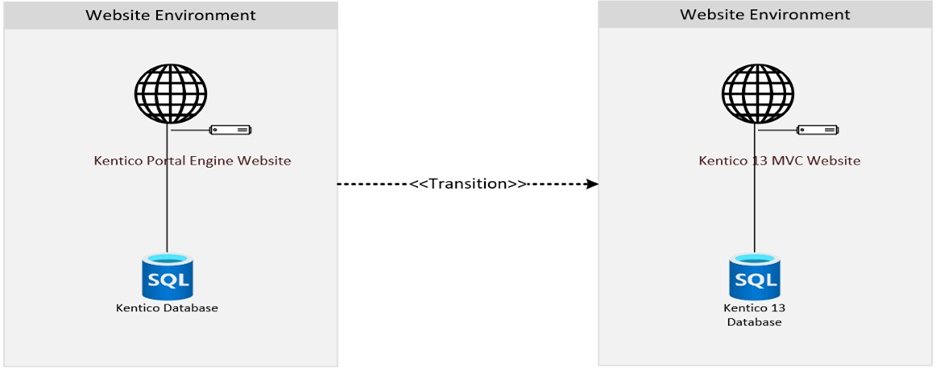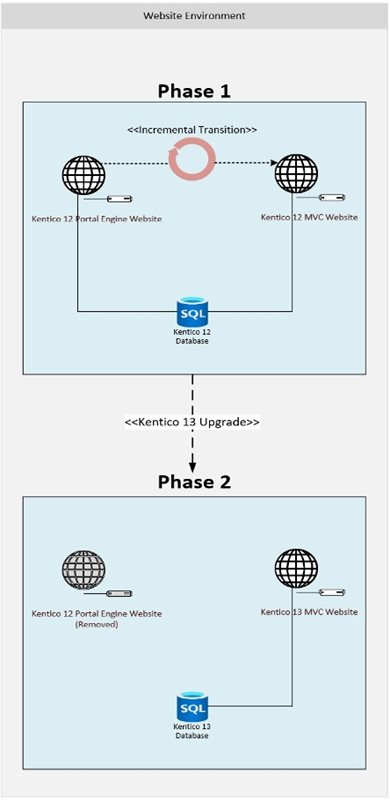Goodbye Web Forms, Hello MVC
Organizations that built their website in Kentico 12 or earlier versions of Kentico use a web application framework called Web Forms. That technology will be soon phased out.
In 2002, Microsoft introduced ASP.NET Web Forms as a website development tool, but in recent years, they started transitioning ASP.NET to its newer MVC framework. This MVC framework includes performance improvements, a cleaner architectural model, and modernized features for building, running, and maintaining web applications. As a result, the number of ASP.NET Web Forms developers has significantly decreased, making it increasingly difficult to find the professional support needed to maintain and build features of ASP.NET websites.
To align with the MVC trend, Kentico introduced the MVC development option in its 2015 Kentico 9 release. They offered both Portal Engine (Web Forms) and MVC as development options in Kentico 10, Kentico 11, and Kentico 12. In 2022, Kentico 13 was the first version that did not include the Portal Engine (Web Forms) development option. Kentico plans to end support for Kentico 12 Portal Engine projects in 2023 forcing all its platform users to transition to a MVC model.
The Transition Effort
Web Forms and MVC are very different development models, and a successful transition involves the redevelopment of the entire application code. Some of the Kentico Portal Engine (Web Forms) code artifacts that will need to be transitioned include:
- Page templates
- Unique landing/campaign pages
- Web parts
- Widgets & Inline Widgets
It is important to note that the transition effort increases with the number and complexity of code artifacts and content to be migrated. For medium to large websites, a website transition may take several months to a year, depending on the size of the development team.
Choosing the Right Approach
There are two options for performing the transition from Portal Engine to MVC. Choosing the appropriate path will depend on your business needs, website size, timing, and resources. Learn more about the options below.
1. Traditional One Release Approach
The Traditional One Release Approach may be used to transition from Portal Engine in Kentico 12 or earlier to Kentico 12 or 13 MVC.

Since Kentico removed the Portal Engine development from Kentico 13, the database schema no longer supports Portal Engine constructs. This means that in order to transition your website, the Portal Engine and MVC websites would have separate website runtime and database environments.
Let’s break down the transition tactics of the Traditional One Release Approach.
- The new website is developed separately from the current website and will replace the current website when released.
- The current website will remain live while the new website is being developed.
- The new Kentico MVC website will not be accessible (live) until the full transition of code and content is complete.
- The old Portal Engine website instance will be decommissioned when the Kentico MVC website goes live.
When does the Traditional One Release Approach makes sense?
- The website is small and can be transitioned quickly.
- The timeline for your transition is lenghty. This is even more significant when you’re dealing with a medium to large website.
- The development of new features is not a priority for your business or your progra. Stakeholders are aware that the development of new features will be limited for the life of the transition project. Any new or updated features to the Portal Engine site will need to be rebuilt in MVC, so you’ll be investing twice to implement any updates. However, limiting new feature development doesn’t always make sense for businesses’ needs. This is often the biggest reason for not opting for the Traditional One Release Approach.
2. Dual Site Agile Approach
Unlike the One Release Approach, a Dual Site Agile approach using the Kentico 12 Portal Engine allows for the current and new MVC websites to be managed within the same database. The same database setup allows for making both MVC (transitioned) and Portal Engine (not yet transitioned) portions available on the website during the life of the transition project. This means that you can rebuild and launch parts of the site incrementally, and using this approach allows you to make priority site enhancements without needing to wait long periods of time or invest twice in the updates. After the transition to MVC is complete, the Kentico 12 MVC instance can be easily upgraded to Kentico 13.

When does the Dual Site Agile Approach Makes Sense?
- Your business or marketing program requires new website features to be developed and launched during the transition period of your website.
- If your site suffers from poor site performance, MVC is expected to give you a performance boost compared to a Web Forms implementation. This improvement in site performance can also benefit your SEO and Media programs.
